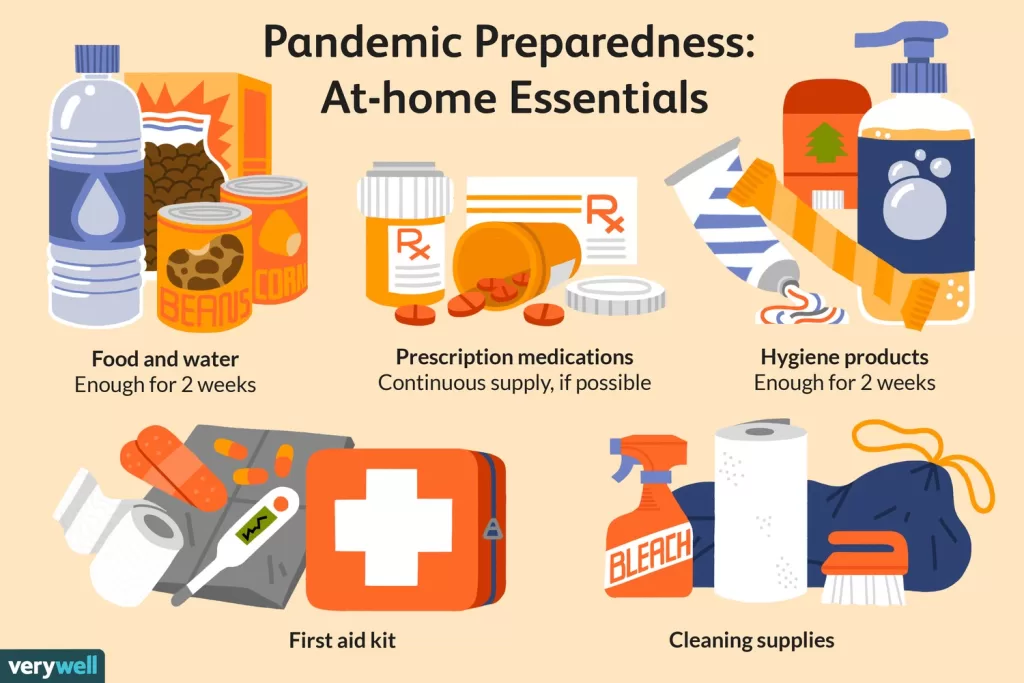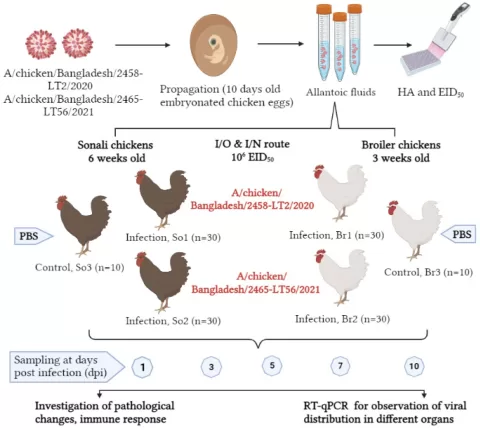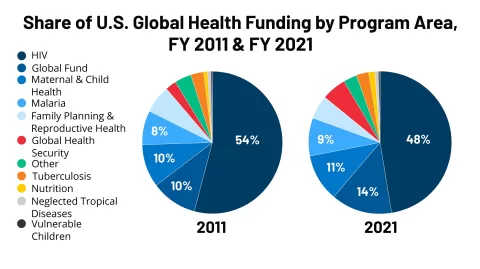Pandemic preparedness is more crucial now than ever, especially in light of increasing threats posed by viruses like H5N1 avian flu and the ongoing challenges of long COVID. An independent review of the global pandemic response has highlighted significant gaps in our readiness for future pandemic threats, urging nations to enhance their strategies. With the international community still navigating the impacts of COVID-19, the importance of robust vaccine development and timely pandemic response cannot be overstated. Recent amendments to health regulations and funding initiatives show promise, but more proactive measures are needed to ensure that the world is equipped to handle outbreaks. As we contemplate the lessons learned from past pandemics, prioritizing research and investment in health infrastructure is essential for safeguarding public health across the globe.
Preparing for global health crises involves a multifaceted approach, often referred to as readiness for infectious disease outbreaks. This encompasses the establishment of effective response strategies, research on vaccine advancements, and the prevention of emerging health threats. As the world continues to grapple with health implications from viruses such as H5N1 avian flu and long COVID, a well-coordinated effort towards pandemic resilience becomes increasingly necessary. Recent evaluations suggest a push for enhanced funding and global cooperation to fortify our defenses against potential future epidemics. Developing comprehensive frameworks for monitoring, prevention, and rapid vaccine deployment is critical for our collective health security.
Understanding Pandemic Preparedness
Pandemic preparedness is a critical aspect of comprehensive public health strategy, particularly emphasized in light of recent global health crises. The ongoing discussions about pandemic threats, especially with illnesses like the H5N1 avian flu and mpox making headlines, underline the necessity for robust readiness frameworks. High-income countries often rely on charity and aid-driven solutions that fall short of sustainable strategies. To build a resilient health system, it’s vital to allocate sufficient funding toward pandemic preparedness initiatives, ensuring that we are better equipped for future outbreaks.
In response to findings from the Independent Panel for Pandemic Preparedness and Response, there is a compelling call for adopting a global pandemic agreement by December 2024. This agreement aims to enhance international collaboration, improve response times, and facilitate vaccine development during health emergencies. Such efforts are crucial not only to mitigate the impact of immediate pandemic threats but also to protect vulnerable populations around the world, particularly in regions lacking adequate health infrastructure.
The Importance of Vaccine Development
Vaccine development has emerged as a cornerstone of pandemic response strategies to curb the spread of infectious diseases. The recent approval of the 21-valent pneumococcal vaccine demonstrates the urgency and effectiveness of developing new vaccines to address common but severe health threats. By providing coverage against numerous serotypes responsible for invasive disease, these vaccines have the potential to significantly reduce mortality and morbidity rates, particularly in older adults.
Moreover, the completion of Bavarian Nordic’s rolling submission for a chikungunya vaccine marks an important milestone in addressing additional viral threats. Vaccines play a vital role in managing emerging health risks and must be prioritized alongside other public health measures. In light of ongoing mpox and potential future outbreaks, there is an urgent need for continuous investment in research and development to ensure that vaccines are accessible and effective in combating infectious diseases.
Long COVID: A Lingering Threat
As the world moves past the heights of the COVID-19 pandemic, awareness of long COVID has intensified among health professionals and researchers alike. Emerging evidence suggests that individuals with hybrid immunity—those who have been vaccinated and previously infected—experience a lower likelihood of developing long COVID. This underscores the importance of widespread vaccination campaigns combined with natural infection resilience in handling continuity of care for millions.
However, the data also shows concerning trends: infections shortly post-vaccination correlate with heightened risks of long COVID symptoms. This highlights a paradox where the efficacy of vaccination is challenged by timing and the individual response to the virus. Public health messaging must evolve to consider these complexities, focusing on comprehensive education about vaccine availability and the importance of vaccination to prevent severe outcomes associated with long COVID.
Evaluating Public Health Responses to Avian Viruses
Recent outbreaks of H5N1 avian flu across various regions have prompted a thorough evaluation of public health responses. The urgency for interventions has never been clearer, especially with the Michigan Department of Agriculture’s enhanced funding for dairy farms affected by these outbreaks. Efforts like these not only facilitate real-time research into avian flu’s epidemiology but also garner insights into effective response strategies to limit spread among animal populations, ultimately benefiting public health.
The independent assessments of health responses, such as those concerning the H5N1 threats, reveal systemic shortcomings. As global health organizations and governments review past incidents, there is an undeniable push for advanced strategies that integrate surveillance, swift responses, and community engagement. Addressing such zoonotic diseases requires thorough cooperation among countries, emphasizing preventive measures and preparedness to mitigate the risk of transmission to humans.
Tackling the Rise of Mpox Variants
With the recent resurgence of mpox cases reported in the Democratic Republic of the Congo and the United States, public health systems are under immense pressure to respond effectively. The adaptability of the virus, as observed in different age groups, particularly among children, necessitates a strong public health messaging campaign promoting vaccination in at-risk populations. The significant uptick in cases in various regions illustrates how infectious diseases can rapidly shift into crisis mode without sufficient countermeasures in place.
Furthermore, understanding the transmission routes is essential. The statistics indicating severe cases among children highlight areas needing targeted interventions and community vaccination support. A comprehensive strategy, including education, vaccination, and effective communication about hygiene practices, is critical in curbing the spread of mpox and ensuring a coordinated approach in public health responses.
The Promise of New Antifungal Treatments
Amid the rising rates of invasive fungal infections, Elion Therapeutics’ announcement regarding their next-generation antifungal candidate SF001 promises to address a pressing healthcare challenge. With $81 million in funding to advance its development, this candidate aims to maintain efficacy against resistant strains while minimizing systemic toxicity. The urgent need for novel treatment options is underscored by the increasing prevalence of resistant fungal infections that complicate patient outcomes.
Research into antifungal treatments is critical; ongoing funding and support allow scientists to explore innovative approaches that could redefine treatment protocols. As the healthcare landscape evolves, it is crucial to foster resilience in pharmaceutical development, addressing the balancing act between efficacy and safety while targeting infections that can lead to severe health complications. The medical community must remain vigilant and adaptable in the face of emerging antifungal threats.
Navigating Future Public Health Mandates
As observed in the Veterans Administration, the imposition of vaccination mandates showcases a successful public health initiative that enhances community protection. The comprehensive requirement for seasonal flu vaccinations among healthcare staff has resulted in significant increases in compliance rates across various health facilities. This trend supports the notion that public health mandates can be effective in controlling the spread of communicable diseases and ensuring a healthier population.
However, the debate surrounding vaccination requirements raises important questions regarding personal freedoms versus societal health responsibilities. Striking a balance between encouraging public health measures through mandates while respecting individual rights will be crucial as future public health responses unfold. Continued dialogue among stakeholders is essential to establish trust and cooperation in implementing health policies that protect vulnerable populations.
The Role of Effective Sterilization Practices During Pandemics
The importance of effective sterilization practices, especially regarding the reuse of filtering facepiece respirators, has come to the forefront during the pandemic. A laboratory study revealing that less than 20% of reused FFRs retained adequate filtration raises serious safety concerns in healthcare settings. The reliance on reused protective equipment is a troubling trend that necessitates strict adherence to safety protocols and standards to safeguard frontline workers and patients alike.
Ensuring that proper sterilization methods are implemented is vital to maintaining the integrity of protective measures during health emergencies. Organizations must prioritize not only the quality of equipment but also compliance with safety regulations to reduce infection transmission rates in medical settings. Continuous education and training on these practices will play a pivotal role in enhancing overall preparedness as we navigate the unprecedented challenges posed by infectious diseases.
Broader Implications of Evolving Viral Threats
The increase in observed diseases such as dengue and mpox, alongside the escalation of viral threats like the H5N1 avian flu, emphasizes the interconnected nature of global health threats. As highlighted by recent outbreaks, countries must bolster their health surveillance and response systems to keep pace with the rapidly changing landscape of infectious diseases. The lessons learned from past pandemics, including COVID-19, should inform better preparedness strategies, intricate surveillance, and rapid response protocols.
A holistic approach, focusing on environmental, social, and healthcare factors, must underpin future public health policies. By addressing these broader implications, policymakers can formulate cohesive strategies that protect public health more effectively. Collaboration among nations will be crucial to mitigate the impact of these evolving viral threats, ensuring that defenses against future pandemics are robust and well-coordinated.
Researching Emerging Infectious Diseases and Their Impacts
With the rise in emerging infectious diseases, such as H5N1 avian flu, understanding their impact on public health systems is critical. Research institutions and health agencies must collaborate closely to monitor these threats, studying their transmission dynamics and potential for zoonotic spillover to humans. The insights gained through rigorous research not only inform immediate response strategies but also foster long-term preparedness initiatives. Public awareness regarding these potential pandemics can be elevated through proactive information campaigns.
Moreover, engaging community stakeholders and educating them on the risks and prevention methods associated with these diseases can lead to better health outcomes. By investing in research and public health education, we can enhance our overall resilience to emerging infectious diseases and mitigate their impacts on healthcare systems and society at large.
Frequently Asked Questions
What are the key components of pandemic preparedness?
Pandemic preparedness involves multiple key components such as surveillance and early detection of infectious diseases, vaccine development for pandemic threats like H5N1 avian flu, public health infrastructure readiness, and coordinated response plans at international and national levels. Effective pandemic response depends on community engagement, resource allocation, training, and continuous improvement of health systems to manage any potential health crisis.
How can countries improve their pandemic response capabilities?
Countries can enhance their pandemic response by investing in robust healthcare systems, ensuring adequate funding for pandemic preparedness initiatives, and fostering global collaboration to share resources and information. Additionally, strengthening vaccine development pipelines, such as those for COVID-19 or H5N1 avian flu, can significantly improve readiness for future pandemic threats.
What role does vaccine development play in pandemic preparedness?
Vaccine development is a crucial aspect of pandemic preparedness, enabling rapid response to emerging disease threats like H5N1 avian flu and COVID-19. By advancing vaccine research, countries can mitigate the impact of pandemics, reduce transmission rates, and increase population immunity. Timely and effective vaccine rollout is essential to control outbreaks and protect public health.
What ongoing pandemic threats should we be concerned about?
Currently, ongoing pandemic threats include diseases such as H5N1 avian flu and mpox, which pose risks to public health globally. Additionally, the resurgence of long COVID symptoms among survivors continues to be a significant concern. Continuous surveillance and research are necessary to understand these threats and prepare appropriate responses.
How does funding impact pandemic preparedness?
Funding is critical for effective pandemic preparedness, as highlighted by the Independent Panel for Pandemic Preparedness and Response. Inadequate resources can hinder vaccine development, public health initiatives, and the establishment of necessary infrastructure. Increasing unearmarked funding and prioritizing financial commitments from high-income nations are essential for bolstering global pandemic readiness.
What lessons have we learned from COVID-19 regarding pandemic preparedness?
The COVID-19 pandemic has underscored the importance of global cooperation, timely data sharing, and coordinated response strategies in pandemic preparedness. It has also highlighted gaps in health systems, the need for rapid vaccine development, and the long-term effects of viral infections, such as long COVID. These lessons are vital for improving future responses to pandemic threats.
How can communities prepare for future pandemics?
Communities can prepare for future pandemics by establishing local health initiatives, participating in vaccination drives, and promoting public health education. Additionally, developing emergency response plans, conducting training drills, and strengthening community resilience through resource sharing and support networks are essential strategies to enhance pandemic preparedness.
What is long COVID and how does it relate to pandemic preparedness?
Long COVID refers to a range of prolonged symptoms experienced by individuals following a COVID-19 infection. It emphasizes the importance of monitoring and addressing the long-term health effects of pandemics in preparedness planning. Understanding long COVID can lead to better diagnostic, treatment, and preventive measures during future health crises.
| Key Topic | Details |
|---|---|
| Pandemic Preparedness Concerns | An independent review highlights inadequate global pandemic preparedness funding, pushing for new agreements by December 2024. |
| Pneumococcal Vaccine Approval | FDA has approved Merck’s 21-valent vaccine for adults, showing strong immunity for invasive pneumococcal disease. |
| Chikungunya Vaccine Submission | Bavarian Nordic completed the submission process for its chikungunya vaccine, aimed at individuals 12 and older. |
| Michigan Aids Dairy Farms amid H5N1 Research | Funding announced for dairy farms affected by avian flu to support research and epidemiological studies. |
| Mpox Outbreak Spreads in DRC | The DRC reports a surge in mpox cases, especially among children under five. |
| Los Angeles Reports Rise in Mpox Cases | Los Angeles sees increased mpox cases, urging vaccinations among at-risk populations. |
| COVID-19’s Long-Term Effects | Study shows hybrid immunity lowers long COVID risks but highlights increased risks from post-vaccination infections. |
| Veterans Administration Flu Vaccine Mandate Successful | Most VA hospitals now mandate flu vaccines for staff, reflecting a growing trend. |
| Novel Antifungal Candidate Advances with New Funding | Elion Therapeutics secures $81 million for advancing a next-generation antifungal drug. |
| Effective Respirators and Sterilization | Study finds inadequate filtration in reused respirators, highlighting safety concerns. |
| In Case You Missed It – Additional Updates | Warnings issued for dengue, rising measles cases, and persistent long COVID symptoms among survivors. |
Summary
Pandemic Preparedness is critical in today’s world, especially given the ongoing discussions around inadequate funding and proactive measures for future health threats. The independent review by the WHO points to the urgency of adequate resources to combat potential pandemics effectively. Major advancements like the approval of new vaccines and government initiatives also play a vital role in enhancing our readiness. As we face diseases like H5N1 and mpox, it is essential to learn from past responses and aggressively adopt findings that will strengthen our global health systems.
The content provided on this blog (e.g., symptom descriptions, health tips, or general advice) is for informational purposes only and is not a substitute for professional medical advice, diagnosis, or treatment. Always seek the guidance of your physician or other qualified healthcare provider with any questions you may have regarding a medical condition. Never disregard professional medical advice or delay seeking it because of something you have read on this website. If you believe you may have a medical emergency, call your doctor or emergency services immediately. Reliance on any information provided by this blog is solely at your own risk.








